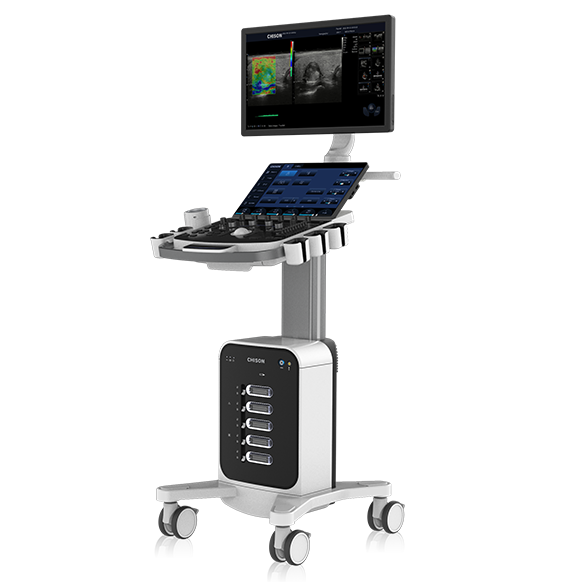Cart-based ultrasound systems are versatile and widely used in medical imaging for a variety of applications. These systems provide high-quality imaging capabilities and are known for their flexibility, ease of use, and wide range of clinical applications. Let's explore some of the key applications of cart-based ultrasound in medical imaging:

Abdominal Imaging: Cart-based ultrasound is commonly used for abdominal imaging, allowing healthcare professionals to visualize and assess organs such as the liver, kidneys, gallbladder, pancreas, and spleen. It aids in the diagnosis and monitoring of conditions such as liver disease, gallstones, renal abnormalities, and abdominal masses.
Obstetrics and Gynecology: Cart-based ultrasound plays a crucial role in obstetrics and gynecology, providing imaging capabilities for prenatal care, fetal monitoring, and evaluation of reproductive organs. It enables visualization of the fetus, assessment of fetal growth, detection of abnormalities, and evaluation of the uterus and ovaries.
Cardiac Imaging: Cart-based ultrasound systems are utilized for cardiac imaging to assess the structure and function of the heart. They enable the visualization of the heart chambers, valves, and blood flow patterns. Cart-based ultrasound is commonly employed for echocardiography, stress echocardiography, and monitoring of cardiac conditions such as heart failure and valve diseases.
Vascular Imaging: Cart-based ultrasound is valuable for vascular imaging, allowing the assessment of blood vessels and blood flow patterns. It is used to evaluate conditions such as deep vein thrombosis, arterial stenosis, aneurysms, and varicose veins. Doppler imaging, a feature of cart-based ultrasound, provides information about blood flow velocity and direction.
Musculoskeletal Imaging: Cart-based ultrasound is employed in musculoskeletal imaging for evaluating soft tissues, joints, tendons, ligaments, and muscles. It aids in the diagnosis and monitoring of conditions such as tendon tears, ligament injuries, muscle strains, and joint abnormalities. Cart-based ultrasound can also assist with guidance during joint injections and aspirations.
Breast Imaging: Cart-based ultrasound is used as a complementary imaging modality in breast imaging alongside mammography. It helps in the characterization of breast lesions, evaluation of breast masses, and guidance for biopsies. Cart-based ultrasound is particularly beneficial for imaging dense breasts and assessing breast abnormalities in younger patients.
Interventional Procedures: Cart-based ultrasound systems are commonly utilized during interventional procedures, providing real-time imaging guidance. It helps with procedures such as needle biopsies, cyst aspirations, abscess drainages, and joint injections. The use of ultrasound guidance enhances accuracy and reduces the risk of complications.
Pediatric Imaging: Cart-based ultrasound is well-suited for pediatric imaging due to its non-invasive nature and real-time imaging capabilities. It is used in pediatric applications such as assessing abdominal organs, evaluating hip dysplasia, detecting congenital anomalies, and monitoring growth and development.
Point-of-Care Ultrasound: Cart-based ultrasound plays a vital role in point-of-care settings, where immediate bedside imaging is required. It is used in emergency medicine, critical care, and trauma situations for rapid evaluation of patients. Point-of-care ultrasound assists in assessing cardiac function, detecting abdominal and thoracic injuries, and guiding procedures.
Urological Imaging: Cart-based ultrasound is utilized in urological imaging for evaluating the kidneys, bladder, prostate, and reproductive organs. It aids in the diagnosis and monitoring of conditions such as kidney stones, urinary tract infections, prostate abnormalities, and urinary incontinence.
In conclusion, cart-based ultrasound systems find extensive applications in medical imaging across various specialties. From abdominal imaging to cardiac, obstetrics, gynecology, vascular, musculoskeletal, breast, pediatric, interventional, point-of-care, and urological imaging, cart-based ultrasound provides valuable imaging capabilities for diagnosis, monitoring, and guiding interventions. Its versatility, image quality, and ease of use make it an indispensable tool in modern healthcare settings, assisting healthcare professionals in delivering optimal patient care.
More details please contact CHISON



Comments
Please Join Us to post.
0